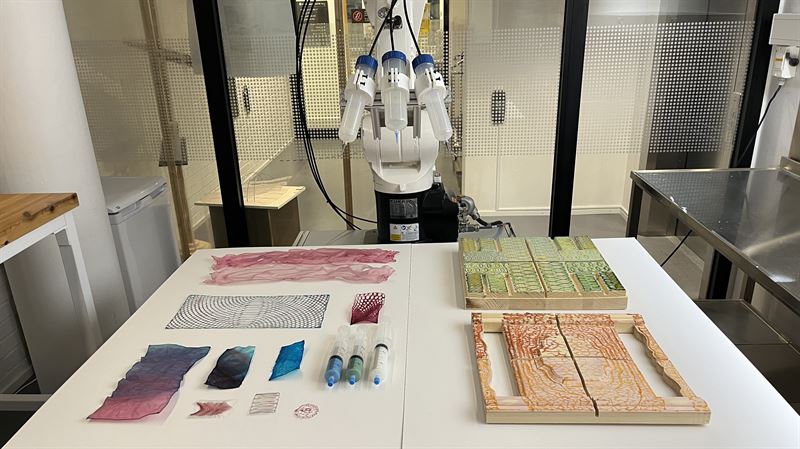- 8 February 2024
- 445 defa okundu.
3D Printed Nanocellulose Upscaled for Green Architectural Applications
Chalmers University of Technology and the Wallenberg Wood Science Center spearheaded the use of 3D printed nanocellulose and algae hydrogel in architectural applications for resource-efficient building solutions, leveraging sustainable biomaterials and digital technologies.

3D printed nanocellulose upscaled for green architectural applications
For the first time, a hydrogel material made of nanocellulose and algae has been tested as an alternative, greener architectural material. The study, from Chalmers University of Technology in Sweden and the Wallenberg Wood Science Center, shows how the abundant sustainable material can be 3D printed into a wide array of architectural components, using much less energy than conventional construction methods.
The construction industry today consumes 50 percent of the world’s fossil resources, generates 40 percent of global waste and causes 39 percent of global carbon dioxide emissions. There is a growing line of research into biomaterials and their applications, in order to transition to a greener future in line with, for example, the European Green Deal.
Nanocellulose is not a new biomaterial, and its properties as a hydrogel are known within the field of biomedicine, where it can be 3D printed into scaffolds for tissue and cell growth, due to its biocompatibility and wetness. But it has never been dried and used as an architectural material before.
The team used nanocellulose fibres and water, with the addition of an algae-based material called alginate. The alginate allowed the researchers to produce a 3D printable material, since the alginate added an extra flexibility to the material when it dried.
3D printing and nanocellulose/ A resource efficient technique
The architectural industry is today surrounded by access to digital technologies which allows for a wider range of new techniques to be used, but there is a gap in the knowledge of how these techniques can be applied. According to the European Green Deal, as of 2030, buildings in Europe must be more resource-efficient, and this can be achieved through elevated reuse and recycling of materials, such as with nanocellulose, an upcycled, byproduct from industry. At the same time as buildings are to become more circular, cutting-edge digital techniques are highlighted as important leverages for achieving these goals.
The energy efficient process relies on the shear thinning properties of the nanocellulose hydrogel. When you apply pressure it liquifies allowing it to be 3D printed, but when you take away the pressure it maintains its shape. This allows the researchers to work without the energy intensive processes that are commonplace in the construction industry.
Malgorzata Zboinska and her team designed many different toolpaths to be used in the robotic 3D printing process to see how the nanocellulose hydrogel would behave when it dried in different shapes and patterns. These dried shapes could then be applied as a basis to design a wide array of architectural standalone components, such as lightweight room dividers, blinds, and wall panel systems. They could also form the basis for coatings of existing building components, such as tiles to clad walls, acoustic elements for damping sound, and combined with other materials to clad skeleton walls.
The future of greener building materials
This study provides the first steps to demonstrate the upscaling potentials of ambient-dried, 3D-printed nanocellulose membrane constructs, as well as a new understanding of the relationship between the design of the material’s deposition pathways via 3D printing, and the dimensional, textural, and geometric effects in the final constructs. This knowledge is a necessary stepping stone that will allow Malgorzata Zboinska and her team to develop, through further research, applications of nanocellulose in architectural products that need to meet specific functional and aesthetic user requirements.

